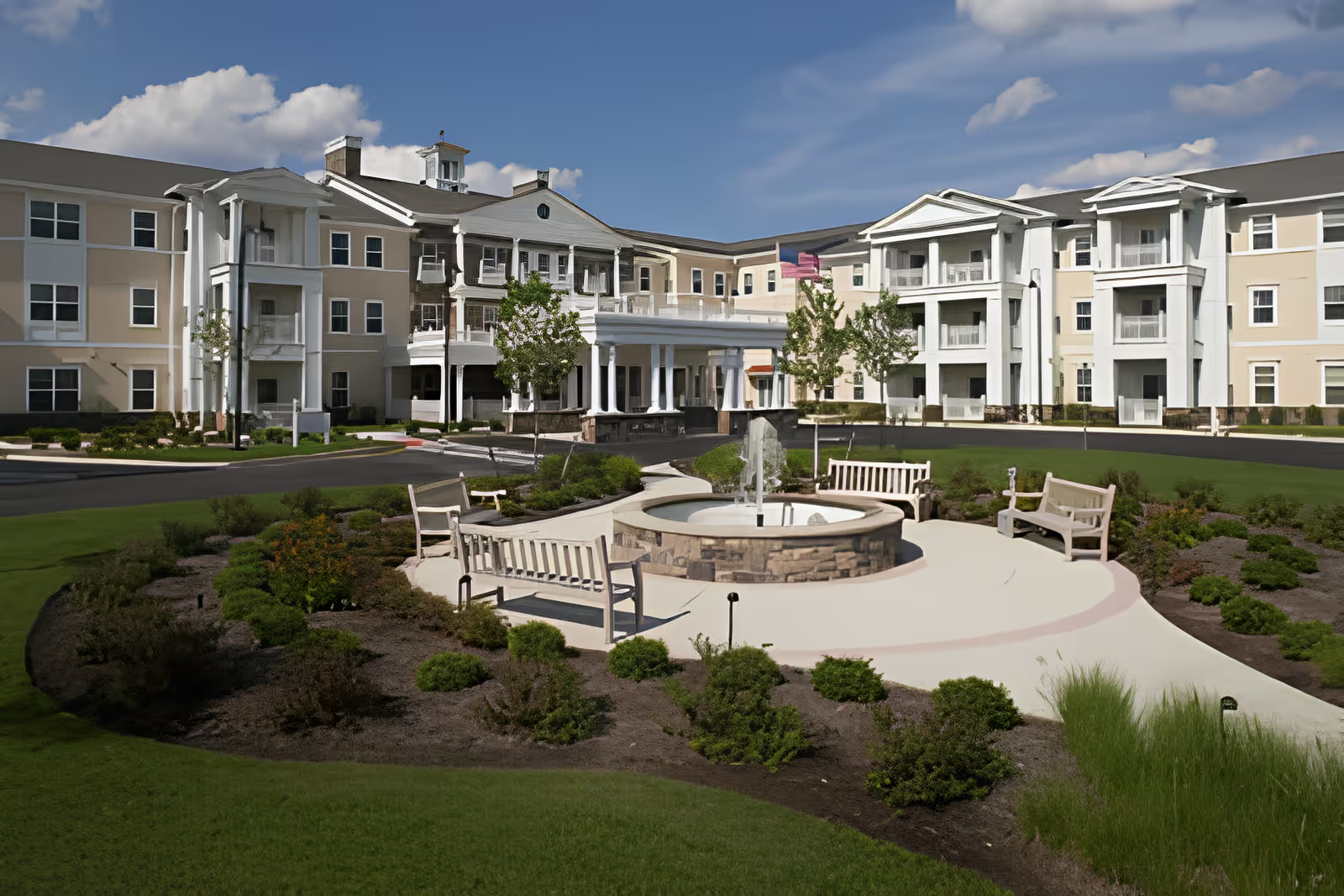Overall sentiment across the reviews is mixed but leans positive with a significant number of detailed, highly favorable accounts praising staff, cleanliness, programming and the physical campus. Many families describe Sunrise of Old Tappan as a clean, attractive, well-maintained community with resort-like landscaping, roomy common areas, and thoughtful memory-care layouts. Admissions and move-in processes receive consistent praise in several reviews: staff are described as organized, communicative, and helpful during transitions. Activity programming is repeatedly cited as a strength — reviewers mention a wide variety of offerings, engaged activity staff (several named individuals receive commendations), and residents who appear to be participating and enjoying events. The dining experience also earns many positive marks for restaurant-style service and multiple menu choices, even though food quality is called inconsistent by some.
Caregiving and daily attention are areas where the reviews are polarized. A large cluster of reviews describe caregivers as kind, attentive, and compassionate — families report that staff know residents’ names, respond quickly, and go above and beyond. Several reviews highlight good clinical support, timely medications, and an involved medical director. Conversely, a separate but serious set of reviews alleges critical failures: short-staffing (especially on evenings), lack of licensed nursing coverage, aides who yelled at residents, refusal of personal items (hearing aids), threats or retaliation, and in one account a delayed response to medical needs with severe outcomes. These negative reports are stark and describe fear and distress among families; they stand in strong contrast to the many reports of excellent hands-on care. The pattern suggests variability in care quality by shift, unit, or time period rather than uniformly poor or uniformly excellent clinical performance.
Management and administration receive mixed marks. Multiple reviewers praise specific admissions staff and managers for clear communication and compassionate onboarding. Several named staff and directors are singled out for exemplary service. At the same time, other reviewers report rude or disrespectful management, cryptic explanations about care, broken promises about staffing levels (for example, asserted 24-hour aide rotations that were not delivered), and billing issues such as continued charges after a resident was transported to hospital. These administrative concerns also include accusations of nickel-and-dimed pricing, pushes toward specific external vendors, and inconsistent enforcement of family/POA visitation or notification procedures. The repeated appearance of both positive and negative accounts around management indicates uneven experiences — some families find the leadership responsive and competent, while others describe poor communication and lack of advocacy.
Facility, amenities and environment are generally praised. Many reviewers call the property beautiful, well-kept and modern, with clean rooms, attractive common spaces, and inviting outdoor seating. Memory-care units, courtyards, and unusual unit configurations (two-bedroom memory units) are noted as positive differentiators. A number of reviewers emphasize the community’s small scale and home-like feeling; others appreciate the social atmosphere and the fact that residents appear engaged and happy. Negative facility-related comments are less common but include isolated reports of unclean bathrooms, odors, small rooms or limited storage, and dated areas in parts of the community.
Dining and activities receive both compliments and criticism. Several families describe restaurant-quality meals, a wide selection of choices, and pleasant dining rooms. Others say the taste of food is inconsistent or poor, or that bussing and table cleanup are slow. Activity staff are frequently praised by name for the creativity and compassion they bring to programming; yet some reviewers feel activities are insufficient in substance or that resident engagement is lacking in certain units.
Cost, billing and access are recurring themes. Numerous reviews emphasize the community’s high price point; several families indicate that costs rose, that the community did not accept Medicaid, or that there were extra charges beyond expectations. A subset of reviews details billing disputes or unexpected charges tied to hospital transfers. Location and neighborhood are generally viewed positively — many appreciate proximity to parks and local amenities — but limited visitor parking is occasionally noted.
Consistency and variability are the dominant meta-themes. The bulk of feedback is positive about staff warmth, the physical environment, and programming; many reviewers strongly recommend the community and report peace of mind. However, a meaningful minority report severe clinical and behavioral problems, including allegations of neglect, hostile treatment by staff, and inadequate nursing coverage during critical moments. Those negative accounts are serious and should be weighed heavily by prospective residents and families: they indicate potential risks around night/evening staffing, management responsiveness, and clinical escalation pathways. Prospective families should consider in-person tours, ask for current staffing ratios and nursing coverage details, request examples of how medical emergencies are handled, verify billing practices and pharmacy arrangements, and seek recent references from current residents’ families to assess whether the positive experiences are representative and whether any of the concerning reports reflect past issues that have been addressed.
In short, Sunrise of Old Tappan receives many strong endorsements for its caring staff, cleanliness, programming, and campus amenities, delivering what appears to be a home-like and active senior living environment for many residents. At the same time, there are serious, specific negative reports — some describing clinical delays and hostile staff interactions — that create a mixed picture of consistency. Families should validate current staffing and clinical practices, inquire about management responsiveness and escalation protocols, and balance the many positive testimonies against the documented outlier incidents when making placement decisions.







